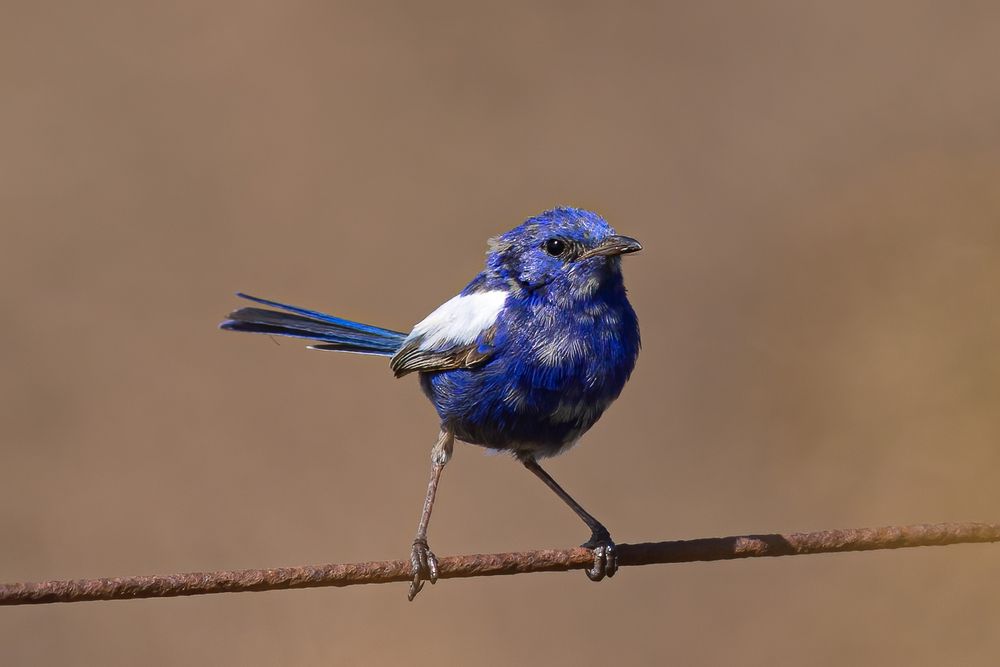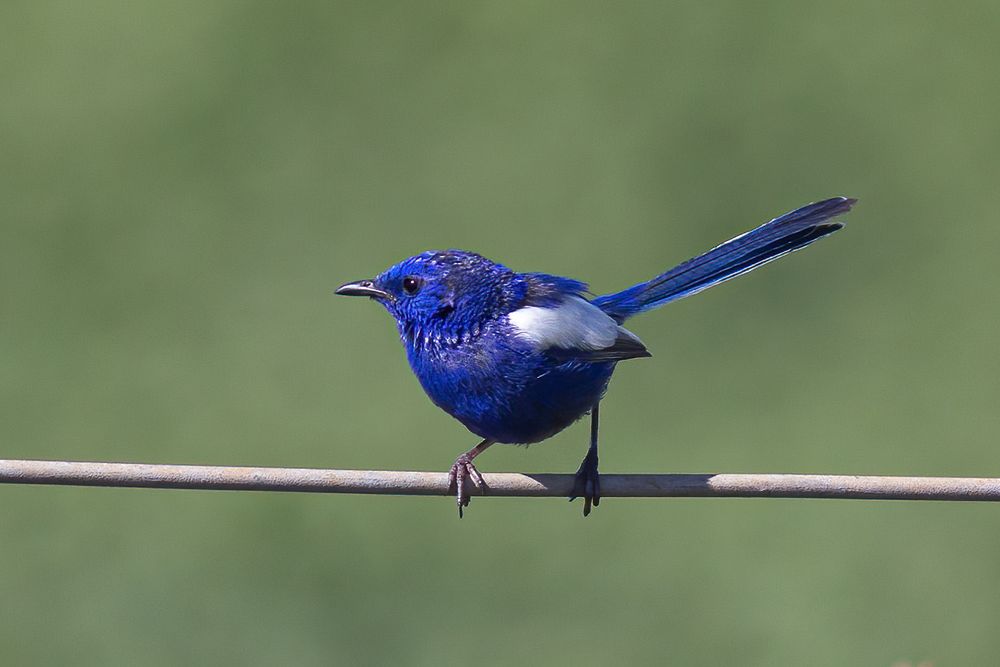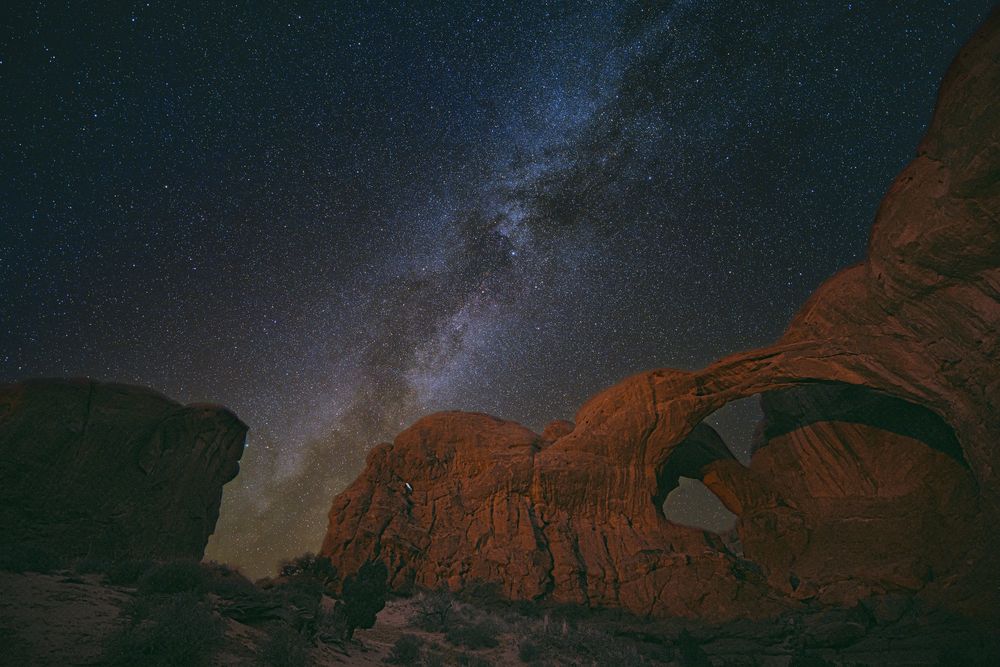Shashank Dholakia
@astroshashank.bsky.social
Astrophysics PhD candidate at University of Queensland | UC Berkeley '21 | Exoplanets and Stars | @astrosoundbites.bsky.social co-host | Astrophotographer
shashankdholakia.github.io
shashankdholakia.github.io
More h-alpha solar timelapses. Here's a loop of plasma twisting off AR4247 from yesterday around 21:30UTC. This might have been part of a small C-class flare. I think it looks like a tornado on the Sun!
🔭 #astronomy #astrophotography
🔭 #astronomy #astrophotography
November 11, 2025 at 12:14 AM
More h-alpha solar timelapses. Here's a loop of plasma twisting off AR4247 from yesterday around 21:30UTC. This might have been part of a small C-class flare. I think it looks like a tornado on the Sun!
🔭 #astronomy #astrophotography
🔭 #astronomy #astrophotography
My attempt at Comet A6 Lemmon from subpar conditions last night. Wispy clouds still visible in the final image. Was surprisingly bright, p sure I could see it with the unaided eye! Easy through binocs.
Canon R5, RF100mm f2.8
19 images, ISO 800, 30s f3.2
🔭 #astronomy #comet
Canon R5, RF100mm f2.8
19 images, ISO 800, 30s f3.2
🔭 #astronomy #comet

October 27, 2025 at 1:08 AM
My attempt at Comet A6 Lemmon from subpar conditions last night. Wispy clouds still visible in the final image. Was surprisingly bright, p sure I could see it with the unaided eye! Easy through binocs.
Canon R5, RF100mm f2.8
19 images, ISO 800, 30s f3.2
🔭 #astronomy #comet
Canon R5, RF100mm f2.8
19 images, ISO 800, 30s f3.2
🔭 #astronomy #comet
1.5 hour timelapse of the Sun in hydrogen-alpha. I set this up quite late in the day and the Sun was pretty quiet so I was surprised how much evolution is visible in the prominences, granulation and the active region. I'll have to try more of this.
Video is set to loop forwards, then in reverse
🔭
Video is set to loop forwards, then in reverse
🔭
October 19, 2025 at 8:52 PM
1.5 hour timelapse of the Sun in hydrogen-alpha. I set this up quite late in the day and the Sun was pretty quiet so I was surprised how much evolution is visible in the prominences, granulation and the active region. I'll have to try more of this.
Video is set to loop forwards, then in reverse
🔭
Video is set to loop forwards, then in reverse
🔭
And as a bonus, here's a false-color composite of the same. Blue is mapped to all of visible, green is infrared beyond 850nm, and red is the methane band at 889nm.
🔭 #astrophotography #saturn
🔭 #astrophotography #saturn

October 6, 2025 at 10:16 AM
And as a bonus, here's a false-color composite of the same. Blue is mapped to all of visible, green is infrared beyond 850nm, and red is the methane band at 889nm.
🔭 #astrophotography #saturn
🔭 #astrophotography #saturn
Been imaging Saturn while its rings are nearly edge-on and tried some infrared filters. At this 889nm methane band, Saturn strongly absorbs light, whereas its rings scatter equally across wavelengths.
Also a good visual demo of how astronomers measure exoplanet atmospheres!
🔭🧪 #astrophotography
Also a good visual demo of how astronomers measure exoplanet atmospheres!
🔭🧪 #astrophotography

October 6, 2025 at 10:12 AM
Been imaging Saturn while its rings are nearly edge-on and tried some infrared filters. At this 889nm methane band, Saturn strongly absorbs light, whereas its rings scatter equally across wavelengths.
Also a good visual demo of how astronomers measure exoplanet atmospheres!
🔭🧪 #astrophotography
Also a good visual demo of how astronomers measure exoplanet atmospheres!
🔭🧪 #astrophotography
However, we find that future, more densely spaced air Cherenkov arrays such as CTA might well be able to map stellar surfaces, especially for hot, blue chemically peculiar stars!

October 1, 2025 at 7:42 AM
However, we find that future, more densely spaced air Cherenkov arrays such as CTA might well be able to map stellar surfaces, especially for hot, blue chemically peculiar stars!
Lastly, we repeated this experiment for a technique called intensity interferometry, which has recently seen a revival from air Cherenkov telescopes, which during moonlit nights can be repurposed as interferometers. Pictured here is the VERITAS Array (13/N)

October 1, 2025 at 7:42 AM
Lastly, we repeated this experiment for a technique called intensity interferometry, which has recently seen a revival from air Cherenkov telescopes, which during moonlit nights can be repurposed as interferometers. Pictured here is the VERITAS Array (13/N)
Interferometry does pretty well at resolving small-scale details for nearby stars. But we found that it actually lacks a lot of information about broad-scale features (low degree modes). It turns out if we get simultaneous photometry as a star rotates, it resolves these really well! (12/N)

October 1, 2025 at 7:42 AM
Interferometry does pretty well at resolving small-scale details for nearby stars. But we found that it actually lacks a lot of information about broad-scale features (low degree modes). It turns out if we get simultaneous photometry as a star rotates, it resolves these really well! (12/N)
As we increase the angular diameter of our hypothetical SPOT star, we can see the small-scale details (higher-degree spherical harmonics on its surface, in yellow) come into view. But is this information complete? (11/N)

October 1, 2025 at 7:42 AM
As we increase the angular diameter of our hypothetical SPOT star, we can see the small-scale details (higher-degree spherical harmonics on its surface, in yellow) come into view. But is this information complete? (11/N)
How well can we map its surface without making any assumptions (often called regularization in the field of image reconstruction)? We inject different levels of noise into our simulated data and optimize to find the best-fitting map. At high signal-to-noise we basically recover a perfect map! (9/N)

October 1, 2025 at 7:42 AM
How well can we map its surface without making any assumptions (often called regularization in the field of image reconstruction)? We inject different levels of noise into our simulated data and optimize to find the best-fitting map. At high signal-to-noise we basically recover a perfect map! (9/N)
Armed with this new math and code, we set out to tackle a toy experiment first done for spectroscopy by Vogt in 1987 but afaik not tried for interferometry. Following Luger et al. (2021), we paint a hypothetical star's surface with the word 'SPOT' and simulate observing it with the CHARA Array (8/N)

October 1, 2025 at 7:42 AM
Armed with this new math and code, we set out to tackle a toy experiment first done for spectroscopy by Vogt in 1987 but afaik not tried for interferometry. Following Luger et al. (2021), we paint a hypothetical star's surface with the word 'SPOT' and simulate observing it with the CHARA Array (8/N)
With the star's map described in spherical harmonics, we found a really neat analytic solution to its Fourier transform. This gives us the visibility function, which is closely related to what we measure from an interferometer. And the solution is linear with respect to the star's map! (6/N)

October 1, 2025 at 7:42 AM
With the star's map described in spherical harmonics, we found a really neat analytic solution to its Fourier transform. This gives us the visibility function, which is closely related to what we measure from an interferometer. And the solution is linear with respect to the star's map! (6/N)
We can use our knowledge that our star has a spotty surface on a disk to reduce the number of solutions to our problem. If we know the star is rotating, we know the features on its surface will rotate along with it! In our paper, we use the spherical harmonics to represent a star's surface: (5/N)

October 1, 2025 at 7:42 AM
We can use our knowledge that our star has a spotty surface on a disk to reduce the number of solutions to our problem. If we know the star is rotating, we know the features on its surface will rotate along with it! In our paper, we use the spherical harmonics to represent a star's surface: (5/N)
New paper by me and @benjaminpope.bsky.social! How well can we map a star using optical interferometry?
This is just a submitted preprint at the moment--comments and questions welcome! (1/N)
arxiv.org/abs/2509.25433
This is just a submitted preprint at the moment--comments and questions welcome! (1/N)
arxiv.org/abs/2509.25433
October 1, 2025 at 7:42 AM
New paper by me and @benjaminpope.bsky.social! How well can we map a star using optical interferometry?
This is just a submitted preprint at the moment--comments and questions welcome! (1/N)
arxiv.org/abs/2509.25433
This is just a submitted preprint at the moment--comments and questions welcome! (1/N)
arxiv.org/abs/2509.25433
Tawny Frogmouth. Looks like a cross between a muppet and an owl. Possibly one of Australia's weirder birds.
Taken with Canon R5 & 300mm f4 on Aug 31
#birds #NaturePhotography #Nature #ausbird
Taken with Canon R5 & 300mm f4 on Aug 31
#birds #NaturePhotography #Nature #ausbird

September 28, 2025 at 7:43 PM
Tawny Frogmouth. Looks like a cross between a muppet and an owl. Possibly one of Australia's weirder birds.
Taken with Canon R5 & 300mm f4 on Aug 31
#birds #NaturePhotography #Nature #ausbird
Taken with Canon R5 & 300mm f4 on Aug 31
#birds #NaturePhotography #Nature #ausbird
An ant? No, an ant-mimic spider (Myrmarachnae). These are from the family Salticidae (jumping spiders) and you can see it in their big binocular front eyes. Although they have 8 legs they often wave their front two like antennae just to get in character.
#bugsky #spidersky 🌿
#bugsky #spidersky 🌿



September 18, 2025 at 3:36 AM
An ant? No, an ant-mimic spider (Myrmarachnae). These are from the family Salticidae (jumping spiders) and you can see it in their big binocular front eyes. Although they have 8 legs they often wave their front two like antennae just to get in character.
#bugsky #spidersky 🌿
#bugsky #spidersky 🌿
Timelapse of the altocumulus undulatus clouds over Brisbane yesterday
July 31, 2025 at 5:55 PM
Timelapse of the altocumulus undulatus clouds over Brisbane yesterday
AR (active region) 4079 on the Sun with Earth superimposed for scale. Trying out my hand at hydrogen-alpha solar #astrophotography
Taken with AT111mm refractor, Daystar Quark chromosphere and ZWO ASI715mc
🔭
Taken with AT111mm refractor, Daystar Quark chromosphere and ZWO ASI715mc
🔭

May 7, 2025 at 12:31 PM
AR (active region) 4079 on the Sun with Earth superimposed for scale. Trying out my hand at hydrogen-alpha solar #astrophotography
Taken with AT111mm refractor, Daystar Quark chromosphere and ZWO ASI715mc
🔭
Taken with AT111mm refractor, Daystar Quark chromosphere and ZWO ASI715mc
🔭
White-winged fairywren:
These are very local and rare here in SEQ. We heard reports that a particular stretch of road near Oakey had these fairywren, and sure enough after a few hours there we did see some! Caught them just before moulting out of breeding plumage!
#bird #ausbird #australianbird
These are very local and rare here in SEQ. We heard reports that a particular stretch of road near Oakey had these fairywren, and sure enough after a few hours there we did see some! Caught them just before moulting out of breeding plumage!
#bird #ausbird #australianbird



March 24, 2025 at 5:29 AM
White-winged fairywren:
These are very local and rare here in SEQ. We heard reports that a particular stretch of road near Oakey had these fairywren, and sure enough after a few hours there we did see some! Caught them just before moulting out of breeding plumage!
#bird #ausbird #australianbird
These are very local and rare here in SEQ. We heard reports that a particular stretch of road near Oakey had these fairywren, and sure enough after a few hours there we did see some! Caught them just before moulting out of breeding plumage!
#bird #ausbird #australianbird
A few weeks ago me and @astroshishir.bsky.social decided to attempt to photograph every species of fairywren in southeast Queensland. Starting a thread here of the results of a lot of early morning hikes (still haven't seen them all yet!)
Superb fairywren:
#bird #ausbird #australianbird
Superb fairywren:
#bird #ausbird #australianbird


March 12, 2025 at 2:34 AM
A few weeks ago me and @astroshishir.bsky.social decided to attempt to photograph every species of fairywren in southeast Queensland. Starting a thread here of the results of a lot of early morning hikes (still haven't seen them all yet!)
Superb fairywren:
#bird #ausbird #australianbird
Superb fairywren:
#bird #ausbird #australianbird
Jupiter rotation timelapse with lo (and shadow) transit! Taken Feb 8th from my backyard. Went out at 5 min intervals to capture a video. From each of these, the best 10% were stacked to produce a single frame (lucky imaging).
🔭C9.25, 📷 QHYII1585C
#jupiter #astrophotography #astronomy
🔭C9.25, 📷 QHYII1585C
#jupiter #astrophotography #astronomy
February 11, 2025 at 10:14 PM
Jupiter rotation timelapse with lo (and shadow) transit! Taken Feb 8th from my backyard. Went out at 5 min intervals to capture a video. From each of these, the best 10% were stacked to produce a single frame (lucky imaging).
🔭C9.25, 📷 QHYII1585C
#jupiter #astrophotography #astronomy
🔭C9.25, 📷 QHYII1585C
#jupiter #astrophotography #astronomy
Incredible bird, not the best at camouflage though

December 20, 2024 at 2:33 AM
Incredible bird, not the best at camouflage though
Townsend's warbler that came within a foot of me! In fact I used my 100mm macro lens which I normally use for bugs to take this photo. First time seeing this bird too!
#birds #birding #photography 🌿
#birds #birding #photography 🌿

December 20, 2024 at 12:08 AM
Townsend's warbler that came within a foot of me! In fact I used my 100mm macro lens which I normally use for bugs to take this photo. First time seeing this bird too!
#birds #birding #photography 🌿
#birds #birding #photography 🌿
Milky Way over Double Arch at Arches National Park
20s ISO3200 x18, foreground and background aligned +stacked separately and combined
🔭🌌
20s ISO3200 x18, foreground and background aligned +stacked separately and combined
🔭🌌

December 4, 2024 at 9:23 PM
Milky Way over Double Arch at Arches National Park
20s ISO3200 x18, foreground and background aligned +stacked separately and combined
🔭🌌
20s ISO3200 x18, foreground and background aligned +stacked separately and combined
🔭🌌
C/2023 A3 (Tsuchinshan–ATLAS) and the Moon rising over Brisbane. I took this timelapse on 30th September while it was still in the early morning sky, with @astroryan.bsky.social. Reposting on bluesky for all the new people here!
🔭🌌
🔭🌌
November 21, 2024 at 5:55 AM
C/2023 A3 (Tsuchinshan–ATLAS) and the Moon rising over Brisbane. I took this timelapse on 30th September while it was still in the early morning sky, with @astroryan.bsky.social. Reposting on bluesky for all the new people here!
🔭🌌
🔭🌌

